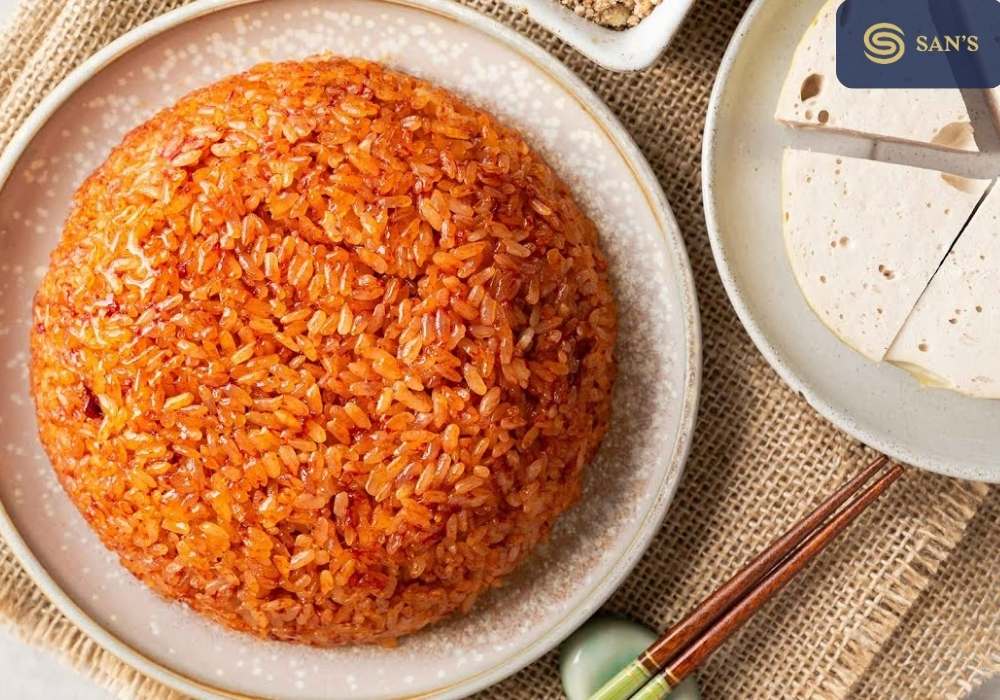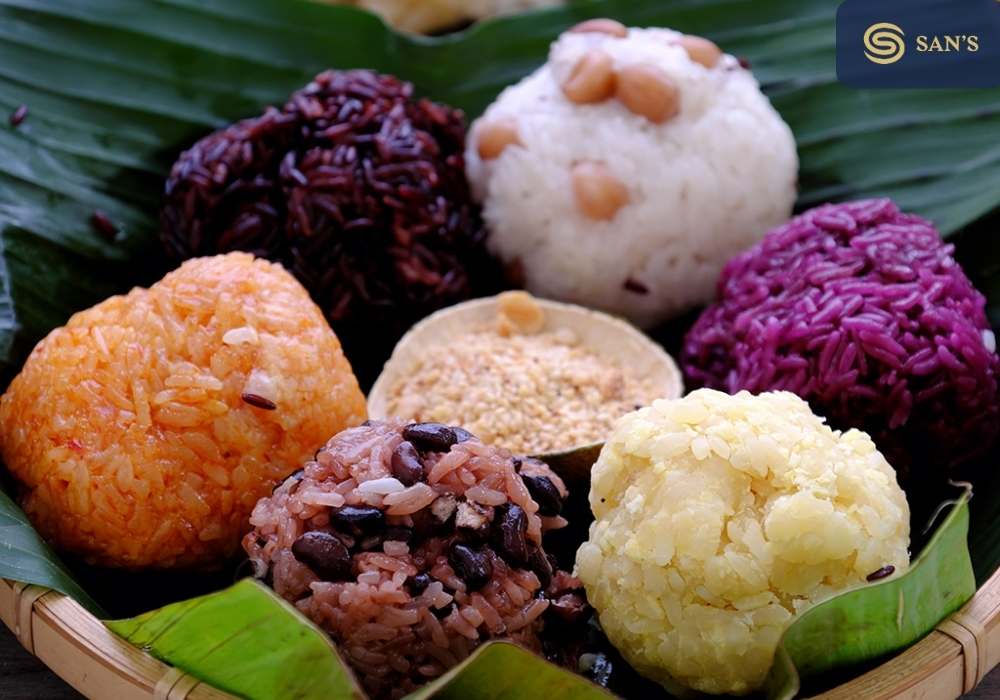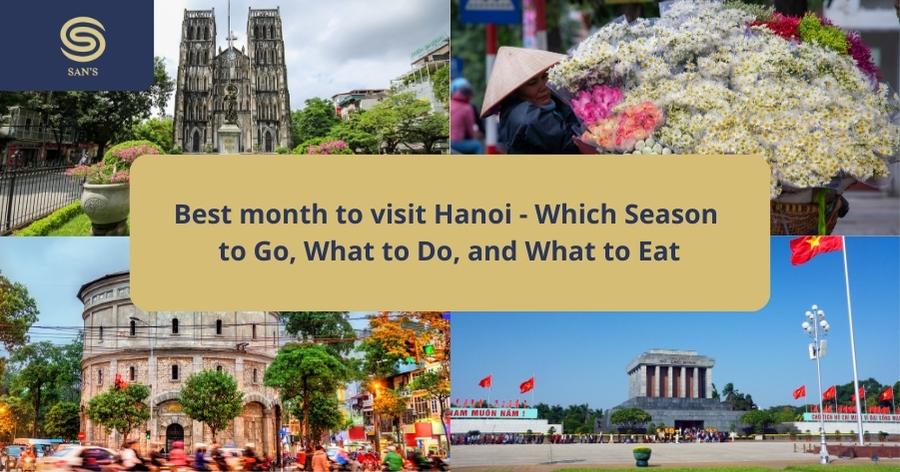Nestled in the heart of Southeast Asia, Vietnam is often celebrated for its enchanting landscapes, vibrant culture, and most notably, its illustrious culinary treasures. The Vietnamese culinary palette is a tantalizing tapestry of flavors – a harmonious blend of sweet, salty, spicy, and sour elements, each dish telling a story of ancient traditions, regional influences, and colonial legacies.
Among these gastronomic gems is the humble yet versatile “vietnamese sticky rice”, locally known as “xôi”. More than just a dish, “xôi” embodies Vietnam’s culinary spirit and cultural essence. It’s not merely rice; it’s a symbol of celebration, a staple for sustenance, and a canvas for countless culinary variations.

Whether savored as a sweet treat, relished with savory toppings, or enjoyed as a hearty breakfast, “xôi” holds an indispensable place in the heart of Vietnamese cuisine. As we journey through the vibrant world of Vietnamese sticky rice, prepare to be captivated by its rich history, its multifaceted forms, and its profound significance in Vietnam’s food culture.
Historical Roots of Xôi
Sticky rice, an ancient grain that has been cultivated for thousands of years, holds profound significance in many Asian cultures. This glutinous rice, distinguished by its chewy texture and ability to bind together, has been an emblem of unity, prosperity, and harmony throughout the ages.
In the sprawling rice paddies of Vietnam, sticky rice is not just a crop but a legacy. Passed down through generations, its cultivation and consumption have been deeply woven into the fabric of Vietnamese society. This enduring grain tells tales of ancestral worship, harvest celebrations, and communal unity.
“Xôi”, the Vietnamese rendition of sticky rice, holds a special place in this tapestry of traditions. More than just a dish, it’s an experience—a memory of family gatherings around a steaming pot of rice, the anticipation of festive feasts, and the comforting aroma that heralds the beginning of a new day.

The beauty of “xôi” lies in its versatility. Over centuries, it has evolved and adapted, drawing influences from regional flavors, colonial imprints, and local innovations. Whether it’s the vibrant “xôi lá cẩm”, tinted purple with magenta leaves, the savory “xôi mặn” topped with shredded chicken and fried onions, or the sweet “xôi chè” swirled with creamy coconut milk—each variant tells a story of its origin, creativity, and the undying love for this cherished dish.
During festive occasions like Tết (Lunar New Year) or family ancestor worships, “xôi” is almost always present, symbolizing abundance, prosperity, and gratitude. The sticky grains, clinging together, represent family unity and the hope for lasting bonds.
In essence, the journey of “xôi” through Vietnam’s history is not just a culinary evolution; it’s a reflection of the country’s cultural nuances, familial values, and timeless traditions that continue to thrive and resonate in every bite.
Types of Vietnamese Sticky Rice:
Sticky rice is a versatile dish in Vietnam, lending itself to a myriad of flavors and variations. Across the vast expanse of the country, each region, community, and even household might have its own unique spin on this beloved staple. Here’s a deeper dive into some of the most popular variants:
1.Xôi Mặn (Savory Sticky Rice):
At the heart of savory sticky rice lies the sumptuous combination of glutinous grains and rich toppings. One of the classic features of “xôi mặn” is its layers of flavors and textures.
- Mung Beans: Often mashed into a paste, these beans offer a creamy texture that contrasts beautifully with the chewy rice. They’re usually steamed along with the rice or layered on top.
- Fried Shallots: Adding a crispy, fragrant element, fried shallots are generously sprinkled over many savory “xôi” dishes, lending a golden crunch with every bite.
- Chinese Sausage (Lạp xưởng): With its sweet and smoky flavor, thin slices of Chinese sausage provide a meaty richness to the dish.
Other popular toppings might include shredded chicken, “chả lụa” (Vietnamese pork sausage), or even salted eggs. The essence of “xôi mặn” is its perfect marriage of hearty toppings with the sticky, cohesive base of the rice.

2. Xôi Ngọt (Sweet Sticky Rice):
The sweet versions of “xôi” are a testament to the dish’s adaptability. Whether enjoyed as a dessert, breakfast, or snack, these variants cater to the sweet-toothed enthusiasts.
- Xôi Lạc (Peanut Sticky Rice): Roasted peanuts are coarsely ground and then mixed with the sticky rice. The result? A delightful crunch and nutty aroma that makes this variant irresistible.
- Xôi Nếp Than (Black Sticky Rice): Made with a type of glutinous rice that’s naturally black, this version is often combined with sugar and coconut milk, resulting in a dessert-like dish that’s both rich and tantalizing.
Other sweet versions might be colored with natural ingredients, like the magenta “xôi lá cẩm”, or be paired with ripe bananas, coconut shreds, or sesame seeds.
- Regional Adaptations:Just as Vietnam’s landscapes shift and change from north to south, so too does its interpretation of sticky rice. In the northern regions, you might find “xôi xéo”, tinted yellow with turmeric and topped with green mung bean paste. Meanwhile, in the southern parts, sweet coconut milk might be generously poured over the rice, a testament to the region’s love for all things coconut.

In every bowl or banana leaf-wrapped portion of sticky rice, one can taste the rich tapestry of Vietnam’s culinary history, its regional influences, and the unyielding love for this simple yet profoundly satisfying dish.
The Making of Sticky Rice
- Rice Selection:At the heart of any sticky rice dish lies the quality of the rice itself. It’s imperative to opt for the right kind of glutinous rice. Often, the grains are shorter and plumper than regular rice, with a natural sticky quality when cooked. This inherent stickiness allows the rice to hold together, making it perfect for both savory and sweet dishes. Quality rice ensures the right texture and flavor, forming a perfect base for a variety of toppings and mix-ins.
- Preparation Techniques:
- Soaking: Before cooking, the rice needs to be soaked for several hours, often overnight. This not only softens the grains but ensures that they cook evenly, resulting in the desired sticky texture.
- Steaming: Unlike regular rice, which is often boiled, sticky rice is typically steamed. This method retains the rice’s stickiness, ensuring a cohesive, chewy texture. It’s often steamed in a bamboo or metal steamer, allowing the grains to cook uniformly.
- Mixing: Once cooked, the rice is usually mixed and fluffed, separating the grains while retaining their sticky nature. This step also allows for even distribution of any additional ingredients or flavors.
- Complementary Ingredients and Their Roles in Flavor and Texture:The beauty of sticky rice lies in its adaptability, allowing for a myriad of complementary ingredients that can elevate its taste and texture.
- Savory Add-ins: For savory versions, ingredients like mung beans, fried shallots, and Chinese sausage are commonly used. These not only add layers of flavors but also introduce different textures, from the creamy mung bean paste to the crispy fried shallots.
- Sweet Companions: For sweet sticky rice dishes, ingredients like coconut milk, sugar, and ripe fruits play a pivotal role. They impart a rich, dessert-like quality to the rice, making it a favored choice for breakfasts or snacks.
- Herbs and Condiments: Fresh herbs like cilantro or mint, and condiments like spicy chili sauce or sweet soy sauce, can be paired with sticky rice, making each bite a unique experience.
Through a meticulous selection of ingredients and a careful cooking process, sticky rice transforms into a dish that’s not only delicious but deeply rooted in the culinary traditions of Vietnam.
Sticky Rice in Daily Life:
- A Wholesome Breakfast Choice:For many in Vietnam, the day begins with a comforting serving of sticky rice. Available everywhere, from street corners to traditional eateries, it’s a favored breakfast item that promises a filling start. Whether you’re on the go or sharing a meal with family, its dense texture and varied toppings, either savory or sweet, provide a lasting satisfaction. Paired with tea or the nation’s iconic drip coffee, it’s the ideal fuel for the morning hours.
- Festive Celebrations:
- Lunar New Year (Tết): The Lunar New Year in Vietnam sees sticky rice taking a special place on the dining table. Often colored using natural ingredients, it becomes a vibrant part of the festive spread, sometimes paired with mung beans or topped with sesame seeds. As a symbol of prosperity and unity, its presence during Tết festivities is essential.
- Mid-Autumn Festivals: As the harvest is celebrated and families reunite, sticky rice again plays a crucial role. Versions filled with sweet fillings or combined with seasonal fruits become popular, perfect for enjoying during cool autumn evenings as families gather.

In essence, sticky rice is more than just a dish; it captures the heart of Vietnamese culture. From daily meals to grand celebrations, it stands as a reflection of Vietnam’s culinary traditions and the daily rhythm of its people.
FAQs:
- What is the best way to store sticky rice (xôi)?For best results, store sticky rice in an airtight container in the refrigerator. If kept at room temperature, especially in humid conditions, it can spoil quickly. In the fridge, it can last for 2-3 days.
- How can I reheat xôi to retain its soft texture?Reheating sticky rice can be a bit tricky, as it tends to harden once cooled. The ideal method is to steam it. Place the rice in a steamer or a metal sieve over a pot of simmering water, cover, and steam for a few minutes until it regains its softness. Alternatively, you can microwave it by placing a wet paper towel over the rice to prevent it from drying out.
- Are there any health benefits associated with eating sticky rice?Sticky rice, like other rice varieties, is a source of carbohydrates, which provide energy. It also contains some protein, vitamins, and minerals. However, due to its sticky texture and higher glycemic index compared to other rice types, it’s best consumed in moderation, especially for those watching their blood sugar levels.
- Can sticky rice (xôi) be made with brown rice?Yes, there’s a version of sticky rice made with glutinous brown rice. It offers a nuttier flavor and is considered healthier because of the additional fiber and nutrients found in brown rice. The preparation method remains largely the same, though soaking times might be longer.
- Why is my sticky rice too hard or too mushy?Achieving the perfect texture in sticky rice often comes down to the soaking time and the steaming process. If your rice is too hard, it may not have been soaked long enough. If it’s too mushy, it might have been overcooked or over-soaked. Always follow the recipe closely, and with experience, you’ll get the desired consistency.
Remember, while xôi is a delightful addition to any meal, its sticky nature makes it filling, so portion control is a good idea, especially for those monitoring their caloric intake.





